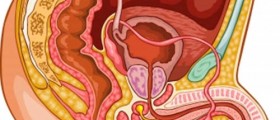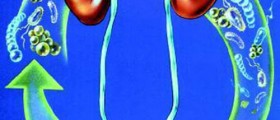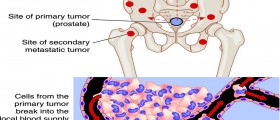I believe ur already answered ur question yourself.
From the literature, incontinence including stress incontinence, right after HoLEP is 5-17%. At month 3, 80% of thos 5-17% have recovered (healed) and the rate dropped to 3%. Overtime, this rate continue to drop.
Stress incontinence/continence is controlled by involuntary muscles . Decreased rate of stress incontinence overtime suggests those injuried muscles have healed. Also I believe that Those muscles are not affected by pelvic excercise.
So far I found no evidence that HoLEP removes the internal sphincter. May be injuried or irritated but not removed.
Not sure if u agree.
Loading...
Loading...
Just read this in regard to cause of RE with HoLEP: "Apart from this and the risk of infection that accompanies any operation or invasive procedure, the only significant side-effect is the near certainty that normal ejaculation will cease. This is because the contraction that occurs during orgasm may not completely block the entrance to the bladder once some tissue has been removed, and the semen will flow back into the bladder (“retrograde” or “dry” ejaculation) rather than out through the penis. This is not harmful, but it does mean that future fertility is greatly reduced." No further detail is provided on this tissue removal on the sight I visited. So I assume that - "once some tissue is removed" must mean the internal sphincter that blocks semen from entering the bladder (as explained by my urologist). So indeed, it seems this sphincter is not purposely removed, but suffers some degree of damage or tissue removal that results in RE in 70% plus of HoLEP patients. Does this seem a logical conclusion?
Loading...
Loading...
Loading...
Loading...
Not a lot of details are available and not sue how real it is.
Holmium laser enucleation of the prostate by an en-bloc and bladder neck preserved technique
Eur Urol Suppl 2017; 16(3);e2135 by Meng X.
The First Affiliated Hospital of Nanjing Medical University, Dept. of Urology, Nanjing, China
32nd Annual EAU Congress, 24-28 March 2017, London, United Kingdom
V72
INTRODUCTION & OBJECTIVES: To report the initial experience and outcome of holmium laser enucleation of the prostate (HoLEP) by a en-bloc and bladder neck preserved technique in treating benign prostate hyperplasia (BPH).
MATERIAL & METHODS: A total of 510 BPH patients who underwent HoLEP from February 2013 to March 2016 in The First Affiliated Hospital of Nanjing Medical University were included in this study. HoLEP was performed by the “en-bloc” enucleation technique. Resection was began at the level proximal to the verumontanum. After performing the initial resection, an anatomic plane was formed between the surgical capsule and hyperplastic gland. Using the shaft of the resectoscope and laser impulse, the plane was developed until the bladder neck. The same method was used for the lateral and middle lobes. The anterior fibrotic tissue was directly resected to the bladder neck until all the lobes were removed from the bladder neck. The bladder neck is usually opened first at the 11–1 o’clock position and then continuously resected on either side, carefully avoiding the penetration of the bladder neck at 5–7 o’clock position. After the resection, all the lobes dropped into the bladder. A morcellator with an offset nephroscopic lens was introduced, and prostate adenoma was morcellated under direct vision. Tissue shivers were removed by irrigation. Clinical data before and 6 months after the surgery were analyzed.
RESULTS: HoLEP were technically successful in all 510 patients. The mean prostate volume was 72 ± 29 mL; mean operative time was 77.8 ± 21.9 min; mean resected prostate weight was 54.3 ± 17.7 g. No transurethral resection of the prostate syndrome was observed during and after HoLEP. The estimated blood loss during HoLEP was 62.1 ± 23.7 mL. International Prostate Symptom Score and postvoid residual volume significantly decreased (24.1 ± 2.84 vs 13.5 ± 3.39, P
Loading...
fascinating result! But I don't understand how the technique work. Plse see my post if interested.
Loading...
The so called Miller technique has its origin in prostectomy:
"The concept of bladder neck preservation was first presented during open retropubic radical prostatectomy [10, 11]. The goal of the urological surgeon performing radical prostatectomy for prostate cancer is to eliminate the cancer and minimize the side effects associated with treatment. It seems that careful dissection of the prostate from the bladder can be performed in such a manner as to preserve most of the circular fibres of the bladder neck. This so-called bladder-neck preservation technique appears to reduce the risk of an anastomotic stricture and accelerate the return of urinary continence [11]. The true urethra-to-urethra anastomosis is the goal of the technique [12]. "
www.ncbi.nlm.nih.gov/pmc/articles/PMC3516968/#!po=86.1111
(Supply the usual header)
Bladder neck preservation during classic laparoscopic radical prostatectomy – point of technique and preliminary results
Loading...
Loading...
Loading...
If Dr. Miller can improve on HoLEP then others should be able to modernize their technique.
Loading...
Results from literature search on ejaculation preservation disagrees with the Meng X, the author of "Holmium laser enucleation of the prostate by an en-bloc and bladder neck preserved technique" (Eur Urol Suppl 2017). It reported his en bloc EP-HoLEP had a ejaculation preservation success rate of 84%.
The disagreement is on the consequence of "bladder neck preservation". It is thought this technique only minimizes the risk of stress incontinence, but has nothing to do with ejaculation preservation. The tissues responsible for EP are those within one cm form the verumontanum. For example, see the procedure for EP-TURP, that has a success EP rate of 90% as oppose to 20% for regular or conventional TURP given below. The EP-TURP"s functional outcomes and complications are comparable with convention TURP.
The disagreement is not on the 84% EP success rate. It is remarkable that EP-HoLEP can have 84% EP rate. A likely explanation is that the author's "en bloc" technique spared tissues within 1cm of the verumontanum.
Below are details for EP-TURP from
"Ejaculation-Preserving Transurethral Resection of Prostate and Bladder Neck:
Short- and Long-Term Results of a New Innovative Resection Technique
Saladin Helmut Alloussi, MD,1 Christoph Lang, MD,2 Robert Eichel, MD,3 and Schahnaz Alloussi, MD1
JOURNAL OF ENDOUROLOGY Volume 28, Number 1, January 2014 a Mary Ann Liebert, Inc.
Pp. 84–89
www.liebertpub.com/doi/pdf/10.1089/end.2013.0093"
"According to the current theory of ejaculation, the loss of bladder neck function after resection is attributed to the loss of antegrade ejaculation.8–10 However, clinical, physiological, and anatomical findings challenge the current theory of the ejaculation mechanism. Videourodynamic observations show a persistent opened internal bladder neck in patients able to ejaculate antegradely whereas patients who have lost the ability to ejaculate after radical retroperitoneal lymphadenectomy present a permanent closed internal bladder neck (Sup- plementary Video is available online at www.liebertpub.com/ end).11 These observations on function are underscored by ana- tomic and histological findings, which identified the smooth muscle musculus ejaculatorius as mandatory to the process of ejaculation.12,13
The conventional technique of transurethral resection is traditionally performed with ‘‘careful removal of apical tissue around the verumontanum.’’2,14 To preserve the antegrade ejaculation, the paracollicular and the situated tissue, which is located 1cm proximal to the verumontanum should not be resected. This is mainly related to the importance of the musculus ejaculatorius and verumontanum for ejaculation.11–13,15"
"In light of advances in knowledge on the anatomy and physiology of the prostate and ejaculation mechanism, we hypothesized that the bladder neck has no relevance for antegrade ejaculation.........All these studies and our results prove that the internal sphincter is not relevant for antegrade ejaculation. "
Surgical procedure for EP-TURP
"The WolffÒ 24F high-flow resectoscope (30° optical device) was employed to perform monopolar resection. The epTURP procedure was undertaken in the following steps:
(1) setting a mark cut 1 cm proximal of the verumontanum as orientation;
(2) complete resection of the middle lobe to the above- mentioned mark;
(3) resection of lateral lobes to the capsule and the ventral side to the level of the verumontanum with avoidance of paracollicular digging;
(4) circular resection of the internal bladder neck;
(5) apical resection utilizing the colliculus seminalis as a distal resection border and maintaining a 1 cm safety area for preservation of ejaculation;
(6) total removal of prostate cuts and final check to confirm that there are no obstructive components (Fig. 1B)."
